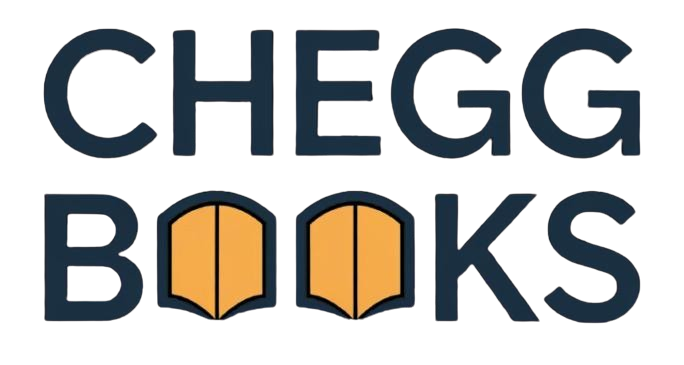“[eBook] [PDF] For Essential Computational Fluid Dynamics 2nd Edition By Oleg Zikanov” has been added to your cart. View cart
![[eBook] [PDF] For Becoming a Master Student Making the Career Connection 17th Edition By Dave Ellis](https://chegbooks.com/wp-content/uploads/2024/08/3-119.jpg)
EBook For Becoming a Master Student Making the Career Connection 17th Edition By Dave Ellis
$114.00 Original price was: $114.00.$25.00Current price is: $25.00.
![[eBook] [PDF] For Chemistry 11th Edition By Steven S. Zumdahl, Susan A. Zumdahl, Donald J. DeCoste](https://chegbooks.com/wp-content/uploads/2024/08/3-118.jpg)
EBook For Chemistry 11th Edition By Steven S. Zumdahl, Susan A. Zumdahl, Donald J. DeCoste
$120.00 Original price was: $120.00.$20.00Current price is: $20.00.
EBook For Biology Exploring the Diversity of Life 5th Edition Canadian By Shelby, Riskin, Brock
$100.00 Original price was: $100.00.$25.00Current price is: $25.00.
ISBN 10:
0176911227
ISBN 13:
9780176911225
ISBN:
9780176911140, 0176911146, 9780176911225, 0176911227
Category: Books
Description
EBook For Biology Exploring the Diversity of Life 5th Edition Canadian By Shelby, Riskin, Brock
Description
- Welcome to Biology: Exploring the Diversity of Life, 5Ce
- Active Learning
- Student and Instructor Resources
- Acknowledgments
- Volume 1: Biology of the Cell
- Chapter 1: Defining Life and Its Origins
- 1.1 What Is Life?
- 1.2 The Chemical Origins of Life
- 1.3 The Evolution of Information Flow: RNA, DNA, Protein
- 1.4. The Development of Metabolism and the First Cells
- 1.5 The Tree of Life
- 1.6 Eukaryotes and the Rise of Multicellularity
- 1.7 The Fossil Record
- Unit 1: Systems and Processes – The Cell
- Chapter 2: The Cell: An Overview
- 2.1 Basic Features of Cell Structure and Function
- 2.2 Prokaryotic Cells
- 2.3 Eukaryotic Cells
- 2.4 Specialized Structures of Plant Cells
- 2.5 The Animal Cell Surface
- Summary Illustration for Chapter 2
- Chapter 3: Energy and Enzymes
- 3.1 Energy and the Laws of Thermodynamics
- 3.2 Free Energy and Spontaneous Processes
- 3.3 Thermodynamics and Life
- 3.4 Overview of Metabolism
- 3.5 The Role of Enzymes in Biological Reactions
- 3.6 Factors That Affect Enzyme Activity
- Summary Illustration for Chapter 3
- Chapter 4: Cell Membranes and Signalling
- 4.1 An Overview of the Structure of Membranes
- 4.2 The Lipid Fabric of a Membrane
- 4.3 Membrane Proteins
- 4.4 Passive Membrane Transport
- 4.5 Active Membrane Transport
- 4.6 Exocytosis and Endocytosis
- 4.7 The Role of Membranes in Cell Signalling
- Summary Illustration for Chapter 4
- Chapter 5: Cellular Respiration
- 5.1 The Chemical Basis of Cellular Respiration
- 5.2 Cellular Respiration: An Overview
- 5.3 Glycolysis: The Splitting of Glucose
- 5.4 Pyruvate Oxidation and the Citric Acid Cycle
- 5.5 Oxidative Phosphorylation: Electron Transport and Chemiosmosis
- 5.6 The Efficiency and Regulation of Cellular Respiration
- 5.7 Oxygen and Cellular Respiration
- Summary Illustration for Chapter 5
- Chapter 6: Photosynthesis
- 6.1 The Physical Nature of Light
- 6.2 Photosynthesis: An Overview
- 6.3 The Photosynthetic Apparatus
- 6.4 The Light Reactions
- 6.5 The Calvin Cycle
- 6.6 Photorespiration and CO2 – Concentrating Mechanisms
- 6.7 Photosynthesis and Cellular Respiration Compared
- Summary Illustration for Chapter 6
- Unit 2: Genes
- Chapter 7: Cell Cycles
- 7.1 The Cycle of Cell Growth and Division: An Overview
- 7.2 The Cell Cycle in Prokaryotic Organisms
- 7.3 Mitosis and the Eukaryotic Cell Cycle
- 7.4 Formation and Action of the Mitotic Spindle
- 7.5 Cell Cycle Regulation
- Summary Illustration for Chapter 7
- Chapter 8: Genetic Recombination
- 8.1 Mechanism of Genetic Recombination
- 8.2 Genetic Recombination in Bacteria
- 8.3 Genetic Recombination Occurs in Eukaryotes during Meiosis
- Self-Test Questions
- Chapter 9: The Chromosomal Basis of Inheritance
- 9.1 Mendel’s Experiments with Garden Peas
- 9.2 Later Modifications and Additions to Mendel’s Hypotheses
- Summary Illustration for Chapter 9
- Chapter 10: Genetic Linkage, Sex Linkage, and Other Extensions to Basic Inheritance Mechanisms
- 10.1 Genetic Linkage and Recombination
- 10.2 Sex-Linked Genes
- 10.3 Chromosomal Mutations That Affect Inheritance
- 10.4 Human Genetic Traits, Pedigree Analysis, and Genetic Counselling
- 10.5 Additional Patterns of Inheritance
- Summary Illustration for Chapter 10
- Unit 3: DNA and Gene Expression
- Chapter 11: DNA Structure, Replication, and Repair
- 11.1 Establishing DNA as the Hereditary Molecule
- 11.2 DNA Structure
- 11.3 DNA Replication
- 11.4 Repair of Damage in DNA
- Summary Illustration for Chapter 11
- Chapter 12: Gene Structure, Expression, and Mutation
- 12.1 The Connection between DNA, RNA, and Protein
- 12.2 Transcription: DNA-Directed RNA Synthesis
- 12.3 Processing of mRNAs in Eukaryotes
- 12.4 Translation: mRNA-Directed Polypeptide Synthesis
- 12.5 Mutations Can Affect Protein Structure and Function
- Summary Illustration for Chapter 12
- Chapter 13: Regulation of Gene Expression
- 13.1 Regulation of Gene Expression in Prokaryotic Cells
- 13.2 Regulation of Transcription in Eukaryotes
- 13.3 Posttranscriptional, Translational, and Posttranslational Regulation
- 13.4 The Loss of Regulatory Controls in Cancer
- Summary Illustration for Chapter 13
- Chapter 14: DNA Technologies
- 14.1 DNA Cloning
- 14.2 Applications of DNA Technologies
- Summary Illustration for Chapter 14
- Chapter 15: Genomes
- 15.1 Genomics: An Overview
- 15.2 Genome Sequencing
- 15.3 Annotation Identifies Genes
- 15.4 Comparative Genomics Can Reveal How Genes and Genomes Evolved
- Summary Illustration for Chapter 15
- Volume 2: Evolution, Ecology, and the Diversity of Life
- Unit 4: Evolution and Classification
- Chapter 16: Evolution: The Development of the Theory
- 16.1 What Is Evolution through Natural Selection?
- 16.2 Evidence for Evolution through Natural Selection
- 16.3 Development of the Theory of Evolution
- 16.4 Evolutionary Theory since Darwin
- Summary Illustration for Chapter 16
- Chapter 17: Microevolution: Changes within Populations
- 17.1 Variation in Natural Populations
- 17.2 Population Genetics
- 17.3 The Agents of Microevolution
- 17.4 Non-random Mating
- 17.5 Maintaining Genetic and Phenotypic Variation
- Summary Illustration for Chapter 17
- Chapter 18: Speciation and Macroevolution
- 18.1 What Is a Species?
- 18.2 Maintaining Reproductive Isolation
- 18.3 The Geography of Speciation
- 18.4 Genetic Mechanisms of Speciation
- Summary Illustration for Chapter 18
- Chapter 19: Systematics and Phylogenetics: Revealing the Tree of Life
- 19.1 Nomenclature and Classification
- 19.2 Phylogenetic Trees
- 19.3 Sources of Data for Phylogenetic Analyses
- 19.4 Traditional Classification and Paraphyletic Groups
- 19.5 The Cladistic Revolution
- 19.6 Phylogenetic Trees as Research Tools
- 19.7 Molecular Phylogenetic Analyses
- Summary Illustration for Chapter 19
- Unit 5: The Diversity of Life
- Chapter 20: Bacteria and Archaea
- 20.1 The Full Extent of the Diversity of Bacteria and Archaea Is Unknown
- 20.2 Prokaryotic Structure and Function
- 20.3 The Domain Bacteria
- 20.4 The Domain Archaea
- Summary Illustration for Chapter 20
- Chapter 21: Protists
- 21.1 The Vast Majority of Eukaryotes Are Protists
- 21.2 Characteristics of Protists
- 21.3 Protists’ Diversity Is Reflected in Their Habitats, Structure, Metabolism, and Reproduction
- 21.4 Eukaryotic Supergroups and Key Protist Lineages
- 21.5 Some Protist Lineages Arose from Primary Endosymbiosis and Others from Secondary Endosymbiosis
- Summary Illustration for Chapter 21
- Chapter 22: Fungi
- 22.1 General Characteristics of Fungi
- 22.2 Evolution and Diversity of Fungi
- 22.3 Fungal Life Styles
- Summary Illustration for Chapter 22
- Chapter 23: Plants
- 23.1 Defining Characteristics of Land Plants
- 23.2 The Transition to Life on Land
- 23.3 Bryophytes: Nonvascular Land Plants
- 23.4 Seedless Vascular Plants
- 23.5 Gymnosperms: The First Seed Plants
- 23.6 Angiosperms: Flowering Plants
- Summary Illustration for Chapter 23
- Chapter 24: Animals
- 24.1 What Are Animals?
- 24.2 Animal Origins: Animals Probably Arose from a Colonial Flagellate
- 24.3 Key Features Used to Classify Animals
- 24.4 Basal Phyla
- 24.5 The Protostomes
- 24.6 The Deuterostomes
- Summary Illustration for Chapter 24
- Chapter 25: Viruses, Viroids, and Prions: Infectious Biological Particles
- 25.1 What Is a Virus? Characteristics of Viruses
- 25.2 Viruses Infect Bacterial, Animal, and Plant Cells by Similar Pathways
- 25.3 Treating and Preventing Viral Infections
- 25.4 Virotherapy: Using Viruses to Cure Disease
- 25.5 Viruses May Have Evolved from Fragments of Cellular DNA or RNA
- 25.6 Viroids and Prions Are Infective Agents Even Simpler in Structure than Viruses
- Summary Illustration for Chapter 25
- Unit 6: Ecology and Behaviour
- Chapter 26: Population Ecology
- 26.1 Introduction
- 26.2 Population Characteristics
- 26.3 Demography
- 26.4 Evolution of Life Histories
- 26.5 Models of Population Growth
- 26.6 Population Regulation
- 26.7 Human Population Growth
- Summary Illustration for Chapter 26
- Chapter 27: Species Interactions and Community Ecology
- 27.1 Population Interactions Shape Communities
- 27.2 Symbioses: Close Associations
- 27.3 Energy Intake and Exchange
- 27.4 Defence
- 27.5 Competition
- 27.6 The Nature of Ecological Communities
- 27.7 Community Characteristics
- 27.8 Effects of Population Interactions on Community Structure
- 27.9 Succession
- 27.10 Variations in Species Richness among Communities
- Summary Illustration for Chapter 27
- Chapter 28: Ecosystems
- 28.1 Ecosystems and Energy
- 28.2 Nutrient Cycling in Ecosystems
- 28.3 Anthropogenic Global Change
- Self-Test Questions
- Chapter 29: Conservation of Biodiversity
- 29.1 The Anthropocene
- 29.2 Threats to Biodiversity
- 29.3 Ecosystem Services Highlight the Benefits of Ecosystems
- 29.4 Conservation Biology: Principles and Theory
- 29.5 Assessing Threatened Species and Prioritizing Efforts
- 29.6 Protecting Biodiversity Requires a Diversity of Solutions
- Summary Illustration for Chapter 29
- The Chemical and Physical Foundations of Biology (The Purple Pages)
- Volume 3: Systems and Processes
- Unit 7: Systems and Processes – Plants
- Chapter 30: Organization of the Plant Body
- 30.1 Plant Structure and Growth: An Overview
- 30.2 The Three Plant Tissue Systems
- 30.3 Primary Shoot Structure
- 30.4 Primary Root Structure
- 30.5 Secondary Growth
- Summary Illustration for Chapter 30
- Chapter 31: Transport in Plants
- 31.1 Principles of Water and Solute Movement in Plants
- 31.2 Uptake and Transport of Water and Solutes by Roots
- 31.3 Long-Distance Transport of Water and Minerals in the Xylem
- 31.4 Transport of Organic Substances in the Phloem
- Summary Illustration for Chapter 31
- Chapter 32: Reproduction and Development in Flowering Plants
- 32.1 Overview of Flowering Plant Reproduction
- 32.2 Flower Structure and Formation of Gametes
- 32.3 Pollination, Fertilization, and Germination
- 32.4 Asexual Reproduction in Flowering Plants
- 32.5 Early Development of Plant Form and Function
- Summary Illustration for Chapter 32
- Chapter 33: Plant Nutrition
- 33.1 Plant Nutritional Requirements
- 33.2 Soil
- 33.3 Root Adaptations for Obtaining and Absorbing Nutrients
- Summary Illustration for Chapter 33
- Chapter 34: Plant Signals and Responses to the Environment
- 34.1 Plant Hormones
- 34.2 Plant Chemical Defences
- 34.3 Plant Movements
- 34.4 Plant Biological Clocks
- 34.5 Learned Behaviour in Plants
- Summary Illustration for Chapter 34
- Unit 8: Systems and Processes – Animals
- Chapter 35: Introduction to Animal Organization and Physiology
- 35.1 Organization of the Animal Body
- 35.2 Animal Tissues
- 35.3 Coordination of Tissues in Organs and Organ Systems
- 35.4 Homeostasis
- Summary Illustration for Chapter 35
- Chapter 36: Animal Nutrition
- 36.1 Nutrients Are Essential Components of Any Diet
- 36.2 Feeding to Obtain Nutrients
- 36.3 Digestive Processes
- 36.4 Structure and Function of the Mammalian Digestive System
- 36.5 Regulation of Digestive Processes
- 36.6 Reflections on the Chapter
- Summary Illustration for Chapter 36
- Chapter 37: Gas Exchange: The Respiratory System
- 37.1 General Principles
- 37.2 Ventilation of the Gas-Exchange Organs
- 37.3 The Mammalian Respiratory System
- 37.4 Exchange of Gas with Blood
- 37.5 Transport of Gases in Blood
- 37.6 Reflections on the Chapter
- Summary Illustration for Chapter 37
- Self-Test Questions
- Chapter 38: Internal Transport: The Circulatory System
- 38.1 Animal Circulatory Systems: An Introduction
- 38.2 Blood and Its Components
- 38.3 The Heart
- 38.4 Blood Vessels of the Circulatory System
- 38.5 Maintaining Blood Flow and Pressure
- 38.6 The Lymphatic System
- 38.7 Reflections on the Chapter
- Summary Illustration for Chapter 38
- Chapter 39: Regulation of the Internal Environment: Water, Solutes, and Temperature
- 39.1 Introduction to Osmoregulation and Excretion
- 39.2 Osmoregulation and Excretion in Invertebrates
- 39.3 Osmoregulation and Excretion in Non-mammalian Vertebrates
- 39.4 Osmoregulation and Excretion in Mammals
- 39.5 Introduction to Thermoregulation
- 39.6 Ectothermy
- 39.7 Endothermy
- 39.8 Reflections on the Chapter
- Summary Illustration for Chapter 39
- Chapter 40: Control of Animal Processes: Endocrine Control
- 40.1 Hormones and Their Secretion
- 40.2 Mechanisms of Hormone Action
- 40.3 The Hypothalamus and Pituitary
- 40.4 Other Major Endocrine Glands of Vertebrates
- 40.5 Endocrine Systems in Invertebrates
- 40.6 Reflections on the Chapter
- Summary Illustration for Chapter 40
- Chapter 41: Animal Reproduction and Development
- 41.1 The Drive to Reproduce
- 41.2 Asexual and Sexual Reproduction
- 41.3 Mechanisms of Sexual Reproduction
- 41.4 Sexual Reproduction in Mammals
- 41.5 Development
- Summary Illustration for Chapter 41
- Chapter 42: Control of Animal Processes: Neural Control
- 42.1 The Basis of Information Flow in Nervous Systems: An Overview
- 42.2 Sensory Inputs: Reception
- 42.3 The Central Nervous System: Integration
- 42.4 The Peripheral Nervous System: Transmission and Response
- Summary Illustration for Chapter 42
- Chapter 43: Muscles, Skeletons, and Body Movements
- 43.1 Vertebrate Skeletal Muscle: Structure and Function
- 43.2 Skeletal Systems
- 43.3 Vertebrate Movement: The Interactions between Muscles and Bones
- Summary Illustration for Chapter 43
- Chapter 44: Animal Behaviour and Responses to the Environment
- 44.1 Introduction
- 44.2 Genes and Behaviour: Nature or Instinct
- 44.3 Environment and Behaviour: Learning or Nurture
- 44.4 Hormones and Behaviour
- 44.5 Neurophysiology and Behaviour
- 44.6 Finding Food/Defences against Predation
- 44.7 Communication
- 44.8 Choice of Habitat
- 44.9 Mating
- 44.10 Social Behaviour
- Summary Illustration for Chapter 44
- Chapter 45: Defences against Disease
- 45.1 Three Lines of Defence against Invasion
- 45.2 Innate Immunity: Nonspecific Defence
- 45.3 Adaptive Immunity: Specific Defences
- 45.4 Impairment and Peculiarities of the Immune System
- 45.5 Immune Systems in Other Organisms
- Summary Illustration for Chapter 45
- Appendix A: Answers to Self-Test Questions
- Glossary
- Index
Reviews (0)
Be the first to review “EBook For Biology Exploring the Diversity of Life 5th Edition Canadian By Shelby, Riskin, Brock” Cancel reply
Shipping & Delivery
Instant Downloads
At Library Sources, we make it easy for you to get your eBooks and solution manuals right away. After you buy, you can download your books instantly. No waiting! Just finish your purchase, and you get a link to download your stuff right away. We have many books for all subjects, so you always find what you need. Our service helps students, teachers, and professionals get the books they need quickly and easily.
Benefits Of Buying Solution Manuals From Library Sources
Here are the benefits of buying eBooks or solution manuals from Library Sources:
- Instant Access: Get your books and manuals immediately after purchase.
- Convenience: Download your materials from anywhere, anytime.
- Wide Selection: Choose from a large variety of subjects and topics.
- No Shipping Costs: Save money by not paying for delivery.
- Environmentally Friendly: Digital books reduce paper usage.
- Searchable Text: Easily find information within the book using search functions.
- Portable: Carry your entire library on your device.
- Cost-Effective: Often cheaper than physical copies.

![[eBook] [PDF] For Biology Exploring the Diversity of Life 5th Edition By Shelby, Riskin, Brock, Fenton, Peter, Russell, Denis, & Maxwell [eBook] [PDF] For Biology Exploring the Diversity of Life 5th Edition By Shelby, Riskin, Brock, Fenton, Peter, Russell, Denis, & Maxwell](https://chegbooks.com/wp-content/uploads/2024/08/2-1.png)


![[eBook] [PDF] For Cardiovascular Physiology Concepts 3rd Edition By Richard Klabunde](https://chegbooks.com/wp-content/uploads/2024/07/1-2.jpg)


![[eBook] [PDF] For Essential Computational Fluid Dynamics 2nd Edition By Oleg Zikanov](https://chegbooks.com/wp-content/uploads/2024/07/1.webp)


Reviews
There are no reviews yet.